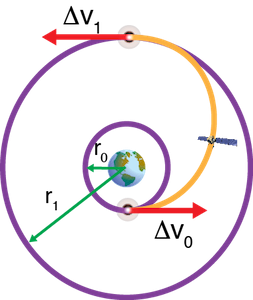Satellites are launched into predetermined orbits based on specific mission requirements. Once they reach their intended orbit, they tend to stay put, more or less, until the time comes to move them to a disposal orbit. Although this paradigm worked well for many decades, it doesn't reflect the new realities of space. Technology is advancing, space systems are proliferating, and threats are increasing, all at an unprecedented pace. Given this dynamic environment, mission planners and operators would benefit from greater flexibility in managing the orbits of active constellations.
A Satellite Shuffle
An interdisciplinary team of researchers at The Aerospace Corporation and the Massachusetts Institute of Technology (MIT) are working together to determine how—and under what circumstances—a program might modify the orbits of operational satellites. Their work could give government programs another tool in outpacing the threat to space-based capabilities.

"Generally, satellites are launched with a specific mission objective," explained Dr. Antonella Albuja of the Astrodynamics Department. "This means that the satellites can address the needs that exist at that point in time, but may not easily be able to address emerging needs." On the other hand, a reconfigurable constellation—or ReCon—can adapt its orbits based on evolving mission needs. "For example," she said, "a constellation could be in one orbital configuration that provides general global coverage; then, when a regional event occurs, some or all of the satellites can adjust their orbits to provide more persistent coverage over that area of interest." Researchers from MIT originally developed the ReCon concept, which includes a modeling framework for optimizing and exploring these constellations. Through a University Partnership Program, Aerospace is collaborating with MIT by funding follow-on research to enhance and expand the ReCon concept. In parallel, the Aerospace team is working to leverage ReCon against some of the government's tough problems.
Antijamming for GPS
Reconfigurability would not only enhance mission utility, but also increase system resilience. With that in mind, Albuja and her colleagues have focused their initial efforts on GPS, which presents an attractive target for adversaries seeking to degrade and disrupt U.S. military and commercial capabilities. Jamming—intentional and otherwise—remains a concern for GPS, partly because the weak, distant signals are relatively easy to overpower with transmitters on the ground. A ReCon approach could be part of the solution. "We are exploring the use of ReCon to provide improved coverage to mitigate those jamming effects," Albuja explained.
Part of this effort involves the use of the Genetic Resources and Innovation in Problem Solving (GRIPS) tool, a sophisticated decision-support tool developed at Aerospace that uses evolutionary algorithms to optimize complex multi-objective problems. "GRIPS has been applied to many domains, including orbit and constellation optimization, constellation replenishment planning, and portfolio optimization," explained co-investigator Kyle Hanifen of the Performance Modeling and Analysis Department. "For the specific jamming scenarios we are considering, GRIPS enables us to optimize both global and regional performance as jamming events occur, while simultaneously minimizing fuel costs and reconfiguration timelines."
ReCon Tradeoffs and Concerns
Of course, reconfigurability comes with a price. Maneuverability requires extra fuel and propulsion, which increases satellite size and mass, which affects a host of mission parameters. "Fuel is the driving factor," said Albuja. "The number of times we want the satellites to reconfigure—and how drastic each desired orbit change is—will drive how much fuel will be needed. So, if we want the satellites to reconfigure a lot of times, more fuel will be required, which would lead to a larger spacecraft."
Hanifen further cites a number of factors that must be considered—by individual programs and the industry overall—before the ReCon approach can be broadly implemented. Chief among these is command and control. For example, when an event occurs, how quickly can satellites be instructed to reconfigure? Will this be a manual process, partially automated, or fully automated? These are among the questions that the team is investigating.
Space traffic management presents another obstacle. "Given the planned significant increase in the number of future on-orbit satellites, space traffic management is already becoming a challenge," Hanifen explained. "If satellites are also reconfiguring, that will just add to the challenges of collision." The ReCon approach would also entail a change in how satellites are designed. "Satellites designed for reconfigurability would need to include additional fuel or potentially multiple types of propulsion systems," he said. "Work will need to be done to develop cost-effective satellite designs with reconfiguration in mind."
Still, technology is evolving to the point that concepts such as ReCon are becoming more feasible. "Our customers continue to face a rapidly evolving set of challenges, for which mission needs and requirements must also evolve," said Albuja. "ReCon adds a layer of flexibility that allows a constellation to adapt to needs that may appear while on orbit."








